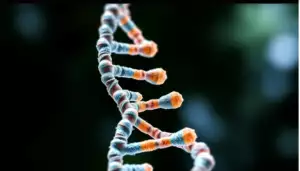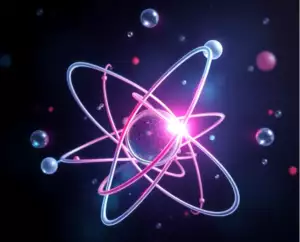Introduction
Topic 1.1 of AP biology is a fascinating exploration of the structure of water and hydrogen bonding and its effects on living organisms. Understanding the structure of water is a crucial step in comprehending its role in life. Let’s start by delving into what water is.
As you may know, water is composed of two hydrogen molecules bonded to a single oxygen atom. This oxygen atom, being more electronegative than the hydrogen atoms, tends to attract shared electrons, giving it a slight negative charge. The hydrogen atoms, in turn, become slightly positive. While various factors can influence electronegativity, it’s more important to understand its effects for our purposes.
Composition of water
It causes water to be a polar compound or, in other words, a molecule with distinct regions of both positive and negative charge. This polarity of water gives rise to hydrogen bonds, weak bonds between hydrogen atoms, and more electronegative atoms (which, in the case of water, is oxygen). The ability of water to form hydrogen bonds with itself and other molecules leads to the many properties of water that make it essential to life. Let’s talk about each of these properties and its importance to life.
Let’s begin with the captivating properties of water cohesion and adhesion. Cohesion, the ability of water molecules to cling to each other due to hydrogen bonding, is a key feature. Adhesion, on the other hand, is the water’s tendency to stick to other types of molecules or surfaces. These properties, driven by hydrogen bonds, make water incredibly versatile in nature. Cohesion gives water a high surface tension, more on which later. But where these properties genuinely shine is in plants. When these properties come together in plants, they allow for the almost magical transport of water and nutrients throughout plant vessels and roots, essential for plant growth.
Next, as mentioned earlier, we have water’s high surface tension. Surface tension is caused by the relatively strong hydrogen bonds between the water molecules at the surface, resulting in a “film” on top of the water. This film provides habitats for many organisms, such as water striders. The almost solid-like surface for such light creatures allows them to walk on the surface of water, creating a whole new ecosystem that supports many organisms.
Water also has a high specific heat capacity. In other words, it can absorb and store a large amount of heat energy with only a slight temperature change. Hydrogen bonds are again answerable for this property. The bonds require significant energy to break, so much energy must be absorbed before the water’s temperature changes. So, how can this possibly be important to life? The answer is regulation. This property causes large water bodies to absorb and store large amounts of energy during the day and release it gradually at night, helping regulate the climate and creating a more stable environment for life. This same effect also helps maintain temperature stability within organisms, essential for the efficiency of enzymes and proteins.
Due to its polarity, water can also dissolve many substances, making it especially useful in chemical reactions and transporting nutrients and waste products throughout organisms.
Water is also less dense in its solid form. As the water cools, the molecules slow down, allowing hydrogen bonds to become more stable and take on a crystalline lattice shape. So you finally know why ice floats on water now. Isn’t that interesting? What this results in is water freezing top down in bodies of water; not only does this double as an insulating layer that keeps the water at a stable temperature, but it also makes sure that the entire body of water doesn’t freeze over which would make aquatic life impossible in aquatic environments.
This polarity of water gives rise to hydrogen bonds, weak bonds between hydrogen atoms, and more electronegative atoms (which, in the case of water, is oxygen).
Water composition
Conclusion
Those were some of the most important properties of water and how they are quintessential to life. I hope I helped you learn something new today or maybe even helped you review (hopefully not at the last minute) for your upcoming exam. Thank you. See you next time.



